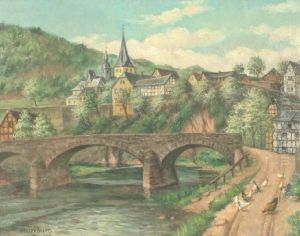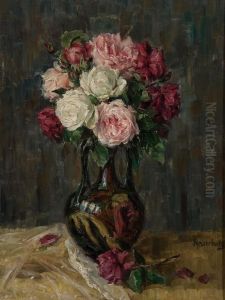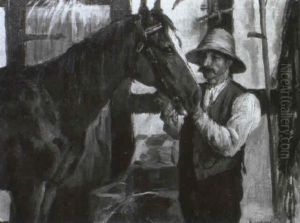Gerhard Neuerburg Paintings
Gerhard Neuerburg was a German artist known for his contributions to post-war modern art, particularly within the field of sculpture. Born on December 29, 1926, in Trier, Germany, Neuerburg grew up during a period of significant political upheaval and change, which would later be reflected in his artistic endeavors.
During the early years of his career, Neuerburg was profoundly influenced by the destruction he witnessed during World War II, and this would deeply inform his aesthetic and thematic choices. He studied art in a country rebuilding itself, and his work became part of the broader conversation about memory, trauma, and reconstruction that characterized much of German art in the post-war period.
Neuerburg's sculptures often utilized materials such as stone, metal, and wood, and he was known for his ability to imbue these materials with a sense of organic life and emotional resonance. His artistic vision was marked by a unique blend of abstraction and figuration, an interplay that allowed him to explore the human condition and the relationship between individuals and the spaces they inhabit.
Throughout his career, Neuerburg participated in numerous exhibitions and received considerable acclaim for his contributions to modern sculpture. His works are featured in public spaces and collections both in Germany and internationally, serving as a testament to his skill and vision as an artist.
Gerhard Neuerburg continued to create and inspire until his death on July 27, 2012. His legacy is preserved in the form of his enduring artworks, which continue to speak to the themes of memory, history, and the power of the visual arts to express complex emotional and existential states.


